#Mesopotamian Demon
Text

#The Exorcist (1973)#The Exorcist#70's#70s#1973#pazuzu#Mesopotamian Demon#horror novels#azuzu was considered the king of the demons of the wind#Pazuzu was considered the king of the demons#demon#satan#evil#supernatural horror film#70's classic horror movies#classic horror movies#my gif#gifs#gif#my edit
131 notes
·
View notes
Text
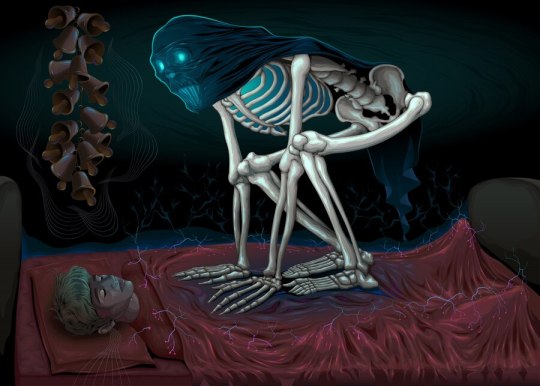
The Alû [Babylonian, Mesopotamian mythology]
In ancient Babylon, belief in possessing demons or spirits was not uncommon, and these entities were often used to explain symptoms or diseases. Often, specific demons were blamed for pains and illnesses of specific body parts: the ‘Utukku’ demon was associated with the human neck, the ‘Gallu’ usually attacked hands, and the evil invisible ‘Alû’ demon was more associated with the chest.
When an Alû possessed someone, the victim would often become very warm (I assume this refers to a fever) and fall unconscious while their eyes remain open, as if fixating on something. This creature was associated with sleep (usually attacking sleeping victims), and their victims would lose the ability to speak during possession. Furthermore, being possessed by one of these beings would make people hear a ringing noise and lose strength in their limbs. The next morning, when the victim awoke, they felt weak and drained of energy.
If you have ever experienced sleep paralysis, these symptoms might sound familiar. Indeed, it is thought that the story of the Alû arose as a way to explain sleep paralysis. Because of this ‘draining’ property, I have found that these creatures are sometimes associated with vampires today.
While these are the specific symptoms for the Alû demon, the term was also used as a general word for possessing demons and was sometimes used interchangeably with ‘Utukku’.
Sources:
Finkel, I. L. and Geller, M. J., 2007, Disease in Babylonia, BRILL, 226 pp.
Bane, T., 2014, Encyclopedia of Demons in World Religions and Cultures, McFarland, 416 pp.
Jastrow, M., 1893, The Religion of Babylonia and Assyria, Handbooks on the History of Religions Volume II, Ginn & Company, 782 pp.
(image source: ‘Sleep Paralysis Demon’ by Ddraw on Freepik)
93 notes
·
View notes
Text
Ancient mythology has remembered Lilith as a multifaceted character. At times a demon and others a deity, Lilith has intrigued scholars across cultures and epochs, reflecting humanity's perennial fascination with the mystical and the unknown.
In Jewish tradition, Lilith occupies a paradoxical role as both a demonic force and the primordial woman, her name resonating with symbolic significance derived from ancient Semitic languages. Yet, Lilith's influence transcends mere myth; she has become a potent symbol for movements advocating feminism and the revival of pagan spirituality, challenging conventional norms and perceptions.
#Lilith#evil#demon#Epic of Gilgamesh#Bible#Adam#Eve#Talmud#Jewish#mythology#Sumerian Figures#Mesopotamian Gods & Religion#creation
26 notes
·
View notes
Text
I have seen such conflicting opinions on working with/worshipping Lilith so I'm here to ask everyone to comment your opinion and give me a proper source to back up what you're saying.
Varied opinions include :
Mesopotamian Origin VS Jewish Origins
Lilith being Open VS Closed
Some Jewish people saying she is open VS some Jewish people saying she is closed
Demon VS Goddess
PLEASE can someone give me proper sources and evidence to prove something because it's absolutely maddening trying to figure this out 🤣
P.S. I'm asking so I DON'T appropriate, so please keep that in mind. Also, no arguing in the comments. Just add your opinion please
#lilith#jewish#pagan#paganism#satanism#lilith worship#judiasm#demon#demonolatry#goddess#goddess lilith#Mesopotamian#mother lilith
79 notes
·
View notes
Text
ACTUAL Mesopotamian Pagan Goddesses You Can Work With INSTEAD Of Lilith 🌙

So if you've seen the old post of mine touching on an antisemitic "Demonolatry" subreddit, you'll probably have heard about the common argument antisemitic practitioners make to try and justify appropriating Lilith and a lot of other Jewish daemons.
A lot of these people will try to propose that working with Lilith isn't cultural appropriation, because she predates Judaism and is actually a "MeSoPoTaMiAn PaGaN gOdDeSs". And I don't think it takes a genius to realise that this is absolute horse shit lol. Just look at any Mesopotamian deities list and she's not there.
These people are most likely referring to similar spirits such as Lamashtu, Kilili, Ki-sikil-lil-la-ke, Ardat-Lili, and even Inanna/Ishtar in some instances. There's also the family of desert-dwelling night spirits that comprise of the Lilu and the Lilitu/Lili daemons.
While Lilith may have originated from or was based off of these daemons, they are not the same as Lilith. And I get that people have their own UPGs on certain entities being aspects of one another and such, but if that entity is part of a closed practise, you are in no place to even have a UPG on them to begin with. It comes from a practise that you aren't a part of, therefore you have no right or reason to have a UPG on it. Please just leave closed practices alone.
To my knowledge, one of the first times Lilith was documented was in the Dead Sea Scrolls, along with the daemon race of Lilin. The Dead Sea Scrolls is a Jewish/Hebrew text. So the idea that Lilith predates Judaism is just not true, and it's clearly an excuse made by people who appropriate her in an effort to brush off any accusations of their cultural appropriation and covert antisemitism. Lilith and the Lilin are only loosely based on the Lilitu wind spirits; They are not synonymous with one another. Anyone who tries to claim they are is just blatantly uneducated and/or antisemitic.
The whole idea of Lilith having origins in Mesopotamian mythology can all be traced back to a mistranslation. The BS-Free Podcast has an episode on this and it goes into depth about this mistranslation. I highly recommend checking out their podcast episode here!
⭒☆·━━━━━━━•( 🌑 )•━━━━━━━·☆⭒
In an attempt to combat some of this antisemitic fuckshit, I wanted to make an entire blog post dedicated to the goddesses and daemonesses of ancient Mesopotamia that you can work with instead of Lilith! I've had this idea for a little while now, but didn't really know who to include or how to construct this until now.
I also have another post in the making which will be a more UPG based post and will also include sigils, conjuration chants, correspondences, illustrations, etc. This current post merely exists to function as a guide and a sort of directory, with mostly historical information about each spirit listed.
So without further ado, let me show you some of the other goddesses, daemonesses, and spirits you can work with; All without appropriating someone else's ethnoreligion!
Full post is under the cut. ↓
⭒☆·━━━━━━━•( 🌑 )•━━━━━━━·☆⭒
☣️ DISCLAIMER: Some of these spirits may be considered intense, unpredictable, and chaotic in nature. These spirits can be overwhelming to work with if you are sensitive to such spiritual energies. Please tread with caution, especially if you're a beginner practitioner. Stay safe. Xx
⚠️ TRIGGER WARNING: Mentions of infant/child d3ath, ab0rti0n, and slight mentions of s3xual a55ault/abu5e and r4pe but nothing described in any explicit detail. Also slight mentions of antisemitism and Ne0-Naz1sm towards the end of the post.
⭒☆·━━━━━━━•( 🌑 )•━━━━━━━·☆⭒

⭒☆·━━━━━━━•( 🌑 )•━━━━━━━·☆⭒
Here are some ACTUAL Mesopotamian Goddesses and Daemonesses that can ACTUALLY be considered Pagan. These spirits, in my opinion, seem to bear the most resemblance to the pop-cultural stereotype of "Lilith".
⭒☆·━━━━━━━•( 🌑 )•━━━━━━━·☆⭒
+: Kilili :+
Lady Kilili is a daemoness of Sumerian origin, likely associated with owls. She is also attested as a minor goddess who functioned as a servant of Inanna/Ishtar.
-
Lady Kilili's name is that of a bird, most likely an owl. In one source she is equated with ab-ba-su-su, meaning "she who leans on the window" in Sumerian. She could be referred to as "queen of the windows" and "the one of haunted places", and it's assumed that she was imagined as an owl daemoness.
-
Kilili was usually affiliated with Ishtar, and according to at least one source, is said to be one of her eighteen messengers. She could also be considered as having a connection to sex due to her link with Ishtar. Kilili could also possibly have links with Lady Ardat-Lili due to similar affiliations, but there is no solid evidence for this.
-
It has also been theorised that Queen Kilili is in fact the goddess figure depicted in the Burney Relief terracotta plaque, and while it is highly likely, this has never been officially confirmed.
-
With the limited information we have on Queen Kilili, all we can really say is that she was likely a daemoness and goddess of owls, nocturnal animals, the night, sexuality, and portals to other worlds (hence the whole "windows" affiliation).
. . .
+: Lamashtu :+
Lady Lamashtu, also known as Lady Labartu, is a Mesopotamian daemoness and (demi)goddess who was said to menace pregnant women during childbirth, and allegedly kidnapped children and devoured them. She was blamed for Sudden Infant Death Syndrome, as humans didn't yet have a medical explanation for this phenomenon at the time.
-
She was the daughter of the Mesopotamian Sky God Anu. There are also modern day accounts of Pazuzu being her consort (the Daemon King of the Southwest Winds) and their offspring being the Lilu wind daemons. In my UPG, Pazuzu and Lamashtu seem to be friends with one another (or at most, in a queer-platonic relationship) but aren't necessarily espoused to one another. I do believe there are a specific subtype of Lilu wind daemons that were created by them though.
-
Lamashtu was also associated with ab0rting unborns and killing newborns, eating men and drinking their blood, disturbing sleep, bringing nightmares, allegedly harassing mothers and expectant mothers, infesting lakes and rivers, killing foliage, and being a bringer of disease, sickness, and death.
-
Queen Lamashtu was classified as an "evil" spirit, as she acted on her own accord rather than following the gods' instructions. However, it is likely that she was just a more chaotic spirit, as not everything in our world can simply be divided up into "good" and "evil". At least, that's what I believe anyways.
-
In modern times, Lamashtu could more so be seen as an advocate for ab0rti0n rights and women's rights, as well as a defender of women and neglected/abu5ed children, rather than being a malicious monster who kills without any motive.
-
As for the men she devours, perhaps we could suggest that these men were persecuting innocent women and sƐxually a55aulting and r4ping them, impregnating them with children the women did not want or were unable to care for. Lamashtu might then assist the woman with ab0rting the unborn child, and then guiding it to the afterlife or elsewhere to be potentially reincarnated.
-
She could also be seen as persecuting sƐxual abu5ers and protecting the victims or potential victims of such a55aults. I don't know, just some food for thought lol. A lot of the areas in which Ancient Mesopotamian religion was practiced had quite misogynistic attitudes towards women, being the time era that it was (obligating them to stay home and be wives); So perhaps Lady Lamashtu's mythos was somewhat twisted out of content because she didn't fill that stereotypical role. In a way, this could make Lamashtu quite the feminist icon!
. . .
+: Akhkhazu :+
Lady Akhkhazu, also known as Dimme-kur, is a Akkadian daemoness associated with pestilence. She is also called "the seizer".
-
Akhkhazu brings fever and plagues, and is a part of a trio of daemonesses (Labasu, Lamashtu/Labartu, Akhkhazu). Despite the fact that Akhkhazu is known as a masculine name, she is said to be feminine in nature.
-
Next to nothing is known of Lady Akhkhazu, however we can confirm that due to her link with Queen Lamashtu, she can be associated with death, destruction, and sickness. Being a daemoness of plagues and illness, it could be proposed that Akhkhazu may also be able to help heal these things.
. . .
+: Labasu :+
Lady Labasu was a part of the aforementioned trio of Mesopotamian daemonesses alongside Lamashtu/Labartu and Akhkhazu. She is said to have the same powers and associations as the other daemonesses in that trio.
-
Not much is known about Labasu outside of that, but we can assume that she's a daemoness of disease, plagues, pestilence, death, and decay. I believe she could also solely be worked with as a death daemon/deity.
. . .
+: Inanna-Ishtar :+
Lady Inanna, also known as Lady Ishtar, is an ancient Mesopotamian goddess of love, beauty, justice, war, and fertility. She is also associated with sex, divine law/justice, and political power. It was initially thought that Inanna and Ishtar were originally seperate deities, but overtime merged into the same deity (similar to how Amun and Ra merged to become Amun-Ra).
-
Inanna-Ishtar's prominent symbols were the lion and the eight-pointed star. She also had associations with the planet Venus. She held the title of the "Queen of Heaven".
-
Her spouse was Dumuzid (later known as Tammuz), the god of shepherds, fertility, and vegetation.
. . .
+: Ki-sikil-lil-la-ke :+
Lady Ki-sikil-lil-la-ke (also known as Kisikil-lila or Ki-sikil) is another obscure Mesopotamian daemoness of which not much is known about.
-
Her origins date as far back as 600 BCE, in the Epic Of Gilgamesh, an ancient Sumerian epic poem. In Tablet XII, an Assyrian-Akkadian translation of the latter part of the Epic Of Gilgamesh, it tells the story of a 'spirit in the tree' referred to as Ki-sikil-lil-la-ke. Proposed translations for the Tablet XII 'spirit in the tree' include; Ki-sikil as "sacred place", lil-la-ke as "water spirit, and lil as either "spirit" or simply "owl" (given that the lil builds its home in the trunk of a tree).
-
The Ki-sikil-lil-la-ke is associated with a serpent and a Zu bird. In the ancient city of Uruk, a huluppu tree grows in Inanna's garden, and she plans to use the wood of the tree to build a new throne. After ten years of growth, Inanna returns to the garden to harvest the tree, but finds that it has since been inhabited. A serpent is dwelling at the base of the tree, a Zu bird is nesting atop the tree raising its young, and the Ki-sikil-lil-la-ke has built a home within its trunk.
-
Gilgamesh was said to have killed the serpent, then the Zu bird flew away to the mountains with its young, while the Ki-sikil-lil-la-ke fearfully destroyed her house and fled to the forests.
-
Lady Ki-sikil's story was eventually mistranslated as referring to Lilith, leading to the misinformation of Lilith having origins in Mesopotamian mythology.
-
Outside of this, not much is known of Lady Ki-sikil. Going off the limited information we have of her, we can conclude that her associations are with willow trees, owls (or other birds of prey), water, snakes, forests, and vegetation in general.
. . .
+: Ardat-lili :+
Lady Ardat-lili (also known as Vardat-lilitu) is a Mesopotamian daemoness and wind/storm goddess who inhabits the desert. Not much is known of this daemoness, but in modern times she has been likened to a "succubus" or vampiric-like entity. Ardat-lili was said to prey on men and conceive daemon offspring from their nocturnal emissions.
-
There are a few different stories of Ardat-lili's origins. Some sources claim that she was the spectre of a young girl who died before getting married, and out of sheer bitterness and envy, she sets out to prevent and/or sabotage the marriages between mortals. Other accounts suggest that Ardat-lili may refer to a specific family of multiple spirits, rather than a singular entity. In my UPG, Ardat-Lili is a daemoness, whereas the Lilitu/Lili are a class of spirits that Ardat-Lili belongs to.
-
Ardat-lili is yet another daemoness of which little information is known, and it's likely that a lot of her mythos was lost to history. I personally interpret her as a daemoness/goddess of storms, wind, the desert, sexuality, and the night. I also see her as being androgynous, similarly to how I see Astaroth in my UPG.
. . .
+: Ereshkigal :+
Lady Ereshkigal (also known by the titles "Queen Of The Underworld" and "Queen Of The Great Earth") is the Goddess of Kur, the land of the dead in Sumerian mythology. In later myths, she was said to rule Irkalla alongside her husband Nergal. However, Ereshkigal and Nergal were only two of the many deities that ruled over the underworld in ancient Mesopotamia.
-
On some accounts, her name was given as Irkalla, similar to how the Greek name Hades was given to the underworld itself as well as the ruler of the underworld. Ereshkigal is also known by the name of Ninkigal, meaning "Lady Of The Great Earth".
-
In the ancient Sumerian poem Inanna's Descent To The Underworld, Ereshkigal was said to be the older sister of the aforementioned Inanna-Ishtar. But historically, they weren't commonly associated with one another. Another account associates Ereshkigal with the gods Ninazu (originally regarded as her husband but later as her son) and Ningishzida. It was said that Ninazu initially ruled over the Underworld, but Ereshkigal later fulfilled this role as the mythos evolved overtime.
-
In later Babylonian deity lists, Ereshkigal ruled over a category of Underworldian gods that were known as "Transtigridian Snake Gods" which included Ninazu, Tishpak, Ishtaran, and the Elamite god Inshushinak. She also had a messenger named Namtar.
-
Some accounts suggest that Ereshkigal and Inanna-Ishtar are somewhat polar opposites to one another; With Inanna-Ishtar being the Queen Of Heaven, and Ereshkigal being the Queen Of The Underworld.
-
. . .
+: Tiamat :+
Lady Tiamat (a.k.a. "The Glistening One") is the primordial goddess of the sea in Babylonian mythology. She represented the embodiment of primordial chaos, and was said to have created the entirety of the cosmos and the universe. with the help of her consort Abzu, the god of groundwater.
-
Tiamat's consort was Abzu, the god of groundwater. Together, they bore the first generation of deities, including their son Kingu. However, trouble arose when these gods kidnapped and murdered Abzu in an attempt to usurp his lordship over the universe. This angered Kingu, and he reported the incident back to his mother.
-
Devastated and enraged by her husband's death, Tiamat created eleven mighty monsters, including the first ever generation of dragons, whose bodies she filled with "poison instead of blood" and sent them to rage war upon the gods to avenge her husband. After war broke out, Tiamat was eventually killed by the storm god Marduk, and it was said that he integrated elements of her body into the heavens and the earth.
-
Tiamat is associated with sea serpents and dragons, and may have even taken the form of these animals sometimes.
-
Side Note: I actually wanna make a whole seperate post regarding the eleven monsters created by Tiamat, because I think they're really cool and I do wanna venerate them at some point!
. . .
⭒☆·━━━━━━━•( 🌑 )•━━━━━━━·☆⭒
Welp, that's pretty much it for this post! I will eventually be making a post about The Anti-Lilith-Appropriation Hierarchy Of Spirits I have come up with, comprised of all the spirits, goddesses, and daemonesses you can work with and venerate instead of Lilith. So stay tuned for that!
⭒☆·━━━━━━━•( 🌑 )•━━━━━━━·☆⭒
There are many different deities, daemons, and spirits that you can honour, worship, and venerate; Lilith doesn't need to be one of them.
Respecting closed practices is of upmost importance, because here's the thing... Spirituality and metaphysical beings cannot be definitely proven to exist. However, the years upon years of discrimination, erasure, xenophobia, religiophobia, and maltreatment in general that groups of people such as Jews and Muslims have had to go through, is very much real and can be backed up by solid evidence.
Do you really think it makes sense to prioritise something that could very well be all in your head, over actual oppressed minorities who have literally been mistreated and even killed since the very beginning of time, all because of shitty bigoted people's prejudices? Just think about that for a second.
Because if you still think it's completely fine to appropriate Lilith, even though it is evidently clear that she is closed and exclusive to Judaism (NOT Mesopotamian), then I have absolutely no problem assuming you're antisemitic and most likely a Ne0-Naz1 as well. And if you are, you should go and fuck yourself. :)
⭒☆·━━━━━━━•( 🌑 )•━━━━━━━·☆⭒

⭒☆·━━━━━━━•( 🌑 )•━━━━━━━·☆⭒
There's unfortunately quite a lot of antisemitism in occult spaces, especially when it comes to Satanism, Daemonolatry, and Luciferianism in particular. I want to do my best to counteract this shit and to help educate those new to this branch of the occult, so that unsuspecting people don't fall down an antisemitic pipeline like I did at the beginning of my path onto Daemonism and Daemonolatry.
If my best friend hadn't educated me on how bad cultural appropriation actually is and hadn't snapped me out of my radicalisation process, the gods only know where I would've ended up... It deeply concerns me just thinking about it. I hate to think about how antisemitic occult spaces such as r/DemonolatryPractices could've potentially led to me being radicalised into a Ne0-Naz1... Ugh, it makes me fucking shudder...
Please don't fall into the trap of thinking that cultural appropriation is completely fine and not harmful at all, because if you give that shit enough time to fester, you never know what it could snowball into. You'll most likely fall down a right-wing pipeline, and trust me, it is not a place you want to end up in.
I had to learn that the hard way.
⭒☆·━━━━━━━•( 🌑 )•━━━━━━━·☆⭒
Anyways, I hope you found this post helpful and informative! And as always, I wish you well on your spiritual journey. <3
~ May You Be Blessed By The Daemonic/Infernal Divine ~
-Kody
#daemonolatry info posts#pagan#paganism#demons#demonology#demonolatry#daemonolatry#daemonology#daemons#lilith#cultural appropriation#end cultural appropriation#end jewish appropriation#tw antisemitism#end lilith appropriation#stop appropriating lilith#antisemitism#antisemitsm tw#occult#paganblr#witchblr#pagan witch#baby witch#witch tips#mesopotamian daemons#mesopotamian demons#mesopotamian goddesses#mesopotamian gods#ancient mesopotamia#mesopotamian mythology
44 notes
·
View notes
Text
I was reading through the Wikipedia page about Mesopotamian deities for... reasons, and something stood out to me.
The page mentions melam, an “ambiguous substance” that makes the skin crawl with fear when observed by a mortal, which was typically worn by gods, but could also be worn by heroes, kings, giants, and demons.
In House of Ashes canon, the vampires are directly tied to the religious activities going on in the area above the ark’s final resting place. They are referred to solely as demons until the protagonists switch to calling them vampires, and are implied to have been a punishment sent by Enlil, the moon god, in answer to Naram-Sin’s efforts to appease him. The shepherds living above the temple even go so far as to worship the vampires and are implied to be sacrificing people to them.
That connection makes me wonder if the vampires’ psilocybin-laced saliva - which is noted to have caused hysteria and increased adrenaline production in bite victims - was inspired by melam. And if it was, which came first in-universe?
#there are lots of fascinating parallels between the vampires and mesopotamian mythology#ie the physical similarities to pazuzu the demon-god#who by the way embodies a destructive wind#something something sow the wind and reap the whirlwind#you get the idea#house of ashes
12 notes
·
View notes
Note
So lately i've been curious on ways i can connect more with Lady Lilith in worship & involving her into my everyday life. I see that you're a Lilithian, so i'm just curious on how you do these things!
here are some tips and offerings you can give to her , but first a tw : slight mentions of abuse , kidnapping , child murder , food , wine , sex , and religious trauma . btw , the underlined part is a link !
1. you can start by reading about Lilith in judaism , although her origins go back to ancient Mesopotamia . deities and other guardians love when we read about their myths as long as we understand that they are not their myths ( like in Greek mythology ) since the myths were written by humans who mostly feared the deities . however , you can always choose to believe anything from the myths . personally , i believe that there is some truth in every myth , and i believe Lilith was not allowed to be in the Garden of Eden after she refused to submit to Adam because she wanted to be equal to him
2. unlearn the bad things you might have been taught about Lilith . she is thought to be evil and many people think that she likes to kidnap and murder babies , but that is not the case , in fact , she is very motherly and she can help women who are in abusive relationships . i can confirm this for you , as she made sure my angel babies are safe and she is keeping abusive people away from my life for as long as possible
3. offerings : chocolate or dark chocolate ( you can eat it in her honor , i promise it’s not disrespectful ) , choosing yourself and stepping into your power , roses , the colors red and black , dark crystals ( such as obsidian , red jasper and / or ruby ) , apples , snake imagery , cinnamon , wine ( especially red dark wine but if you are not fond of that , you don’t have to give her a wine offering ) , figures of her for your altar ( if you cannot afford an altar , that’s okay , just remember that you are a living altar ) , self care / self love , sex magic ( same as the wine situation , if you are not comfortable with sex magic you obviously do not have to do that ) , shadow work , which is looking at the parts of yourself ( mind , emotions , behavior , etc ) that you avoid the most / are most ashamed of . while doing shadow work , you give those parts of you a space to speak . it’s going to be painful sometimes because you will be noting down the parts of yourself that you tend to hide from the others , but remember Lilith will not force you to do shadow work if you don’t want to or if you need to stop it . you can vent and / or rant to her instead . also , a couple of personal offerings i gave to her are on my discord bio i added the black moon Lilith sign ( ⚸ ) , which i think is more connected to astrology but she still appreciates it , the another offering is my pfp on my main tiktok being a painting of her by Dante Gabriel Rossetti :

4. Lilith is understanding , and she will give you space if you need time from your practice due to mental health reasons . if you struggle with religious trauma , she will reassure you that you don’t need to ask for her forgiveness . even if you don’t feel her presence , even if you don’t see her , she will be there for you . you can ask her for signs , and she will eventually deliver them ; for me , she makes sure to land readings with messages from her through tiktok on my fyp . the way she sends signs might be different for you , but she is not subtle when she wants to give you a message . she will also be honest and she will tell you the truth . you can talk to her about everyday things in your life to connect with her , and if you need , you can ask her for reassuring cuddles
i hope these helped ! ♥︎
#sumerian goddess#mesopotamian goddess#demonolatry#jewish mythology#mother of demons#mother lilith#daughter of lilith#lilithian#deity work#deity worship#chaos witch#okay to reblog#bluebellcloud
14 notes
·
View notes
Text
Anytime a demon shows up in a movie, it's always "oh no! get a priest! get holy water! get some crosses!"
and never "hey guys what makes us think that the Catholic Church as an institution is prepared to fight evil? Particularly when it relies upon the existence of perceived evil in order to maintain its power??"
Or "Hey, why does every story about magic and the Catholic Church also tend to canonically validate Christianity as the one true religion??"
And Wendall & Wild is like, "don't worry, y'all. We got you covered."
--
Anyway, this is yet another reason I love the portrayal of the Church in this movie. This is the most thematically coherent animated American film I've seen in a thousand years.
#i mentioned this in the tags of my other post and was like fuck it that's its own post#wendall and wild#wendall & wild#father level bests#james hong#was fantastic as this character#original#i was just gonna say animated film and not animated American film but then i remembered i watched miyazaki like two days ago#so much thematic garbage being pumped out by disney and other mega corps#but mr. peele always fuckin comes thru on thematic cohesion#his art always has something awesome to say and says it so GOOD#horror movies have shit theming just dog shit. but not his. not his.#I'm just saying maybe in the exorcist 'the power of christ compells you' is uhhhhhh not actually compelling the demon at all#why else would they have to scream it literally like 50 times?? like y'all christ isn't compelling shit go get a rabbi or something#get some Buddhists and Taoists and give them a shot this demon CLEARLY has NO ISSUE with crosses#actually now that i think of it that may be the exact reason those priests have such a bad time in that film#picture an ancient Mesopotamian demon from like 1000 BC and these two dudes are like JESUS COMPELLS YOU#and u r just like who the fuck?#i mean oh noOooOoooooo no hiiiimmm!!!#[projectile vomits battery acid for fun]
32 notes
·
View notes
Text
Another creature for Librum Prodigiosum ! The Gallu, from Ancient Mesopotamian mythology! Gallus are great demons of the underworld, a realm known as ‘Kur’ or ‘Kukku’- They drag souls down to this underworld, but can be be appeased by sacrificing lambs!
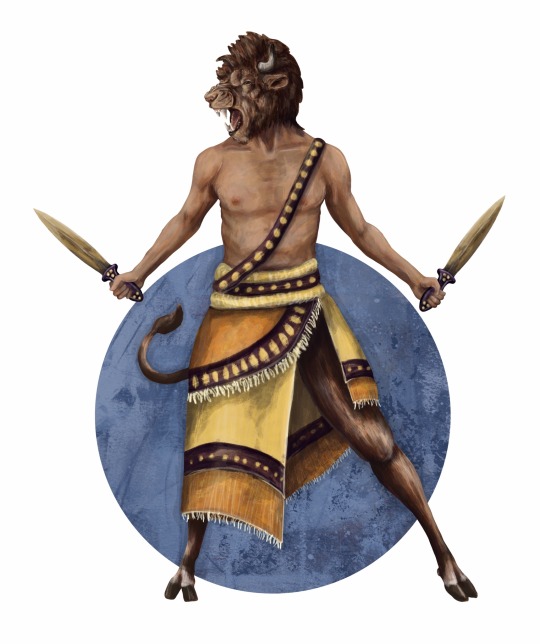
#digital art#digital illustration#fantasy#folklore#mythology#Mesopotamia#mesopotamian mythology#devil#demon#daemon#Gallu#gallus#monster#Librum Prodigiosum#underworld#mythologyart
18 notes
·
View notes
Photo

#The Exorcist (1973)#The Exorcist#70's#70s#1973#pazuzu#Mesopotamian Demon#horror novels#azuzu was considered the king of the demons of the wind#Pazuzu was considered the king of the demons#demon#satan#evil#supernatural horror film#70's classic horror movies#classic horror movies
192 notes
·
View notes
Photo
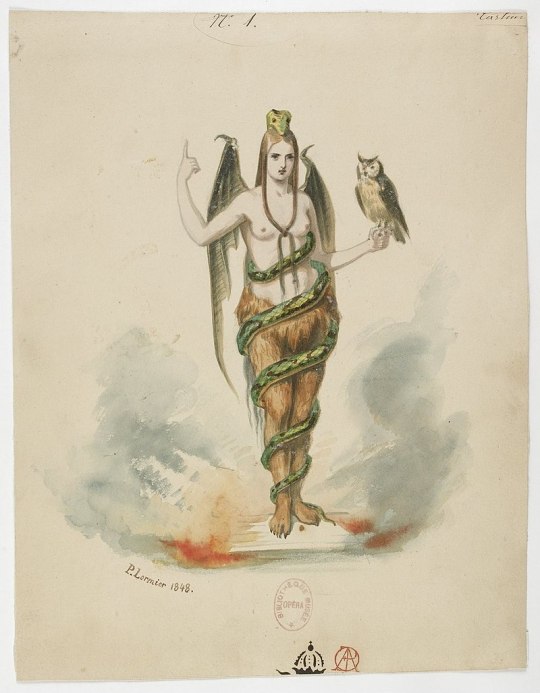
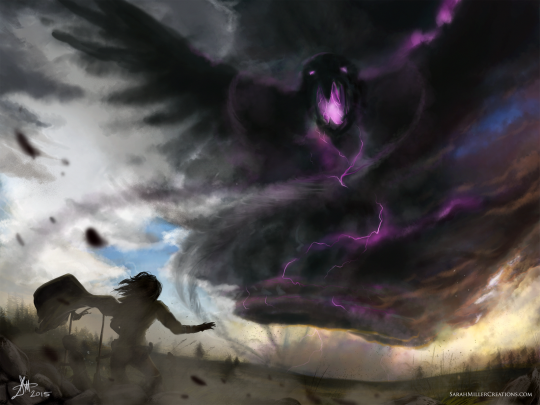
The Ala demon and Ardat Lili [Babylonian mythology; Mesopotamian mythology]
Hailing from ancient Mesopotamian stories, the Ala was described as a floating, amorphous cloud, and like many other evil entities, it was mainly active at night. This evil, cloud-like monster would stalk the streets of human settlements in search for a victim. After choosing someone to haunt, it would enter their house without difficulty and envelop the sleeping victim. Those who have been attacked by these creatures tend to have difficulty falling asleep, often lose their appetite and also develop general depression.
But the Ala demon also had a very particular effect on its victims: it usually attacked sleeping men and would cause them to ejaculate in their sleep. As such, it is likely that the myth of the Ala arose as a way to explain wet dreams. It’s actually not alone in that regard: in Babylonian mythology, the Ardat Lili – which means ‘maiden of the night’ – was another demon or creature that caused sleeping men to ejaculate. These female spirits would approach and arouse men at night. They were also known to ‘satisfy themselves’ with sleeping men, thus explaining the wet spot in their bed.
Supposedly (though I am not entirely certain about this), the Ardat Lili were the undead ghosts of human women who died as virgins. Since they never had the opportunity to experience sex during their lifetime, they would haunt the world of the living and seek out sleeping men.
Sources:
Bane, T., 2014, Encyclopedia of Demons in World Religions and Cultures, McFarland, 416 pp.
Jastrow, M., 1893, The Religion of Babylonia and Assyria, Handbooks on the History of Religions Volume II, Ginn & Company, 782 pp.
Pick, D. and Roper, L., 2004, Dreams and History: the interpretation of dreams from Ancient Greece to modern psychoanalysis, 289 pp.
Citing from ‘Geller, M., 1997, Freud, Magic and Mesopotamia: How the Magic Works, Folklore, 108, p.3’
(image 1: ‘Infernal Apparition’ by Paul Lormier, 1848. This image is often associated with the Ardat Lili spirits but remember it was drawn much later)
(image source 2: ‘air elemental’ by SarahMillerCreations on Deviantart. I thought it fit the description of an evil, cloud-like entity)
#Babylonian mythology#Mesopotamian mythology#undead#spirits#demons#ghosts#creatures#mythical creatures
60 notes
·
View notes
Text
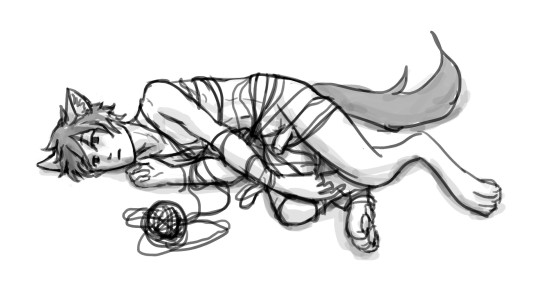

their names are neral and kiralla
they're the caretakers of (a section of) hell, and their jobs are to make sure everyone is steadily on the path towards sublimation into oblivion, whatever that looks like for each of the damned
#catboy#demon girl#nsft#art#my art#ok neral's name is a play on nergal the mesopotamian death god and nermal from garfield i needed to put this somewhere
3 notes
·
View notes
Text
Kicking my feet and giggling like a little girl reading about mesopotamian demons.

🤔 sounds familiar...
#comic is past thumbnailing stage if youre wondering#i dont have any reason to read about mesopotamian demons besides that some ideas are related but still#fun for me#related to jinn i mean
6 notes
·
View notes
Text
Less Lilith Appropriation...
More Lamashtu Appreciation!
🩸💙🐍🦁🐍💙🩸

~ Image Credit ~
#lamashtu#lilith#demonolatry#demonology#appropriation#cultural appropriation#stop appropriating lilith#mesopotamia#mesopotamian religion#sumer#ancient mesopotamia#hail lamashtu#i actually love lamashtu so much asdfghj#paganism#daimonic paganism#deities#mythology#goddess worship#demons#pagan#demonic entity#mesopotamian deities are literally the coolest fffff-
53 notes
·
View notes
Text
Gold Squad & Adventure of White Vortex Characters Photos
Main Antagonist
(Archangel Lilith/Elizabeth Bathory & Archangel Asmodeus/Grigori Rasputin/Rasputin)



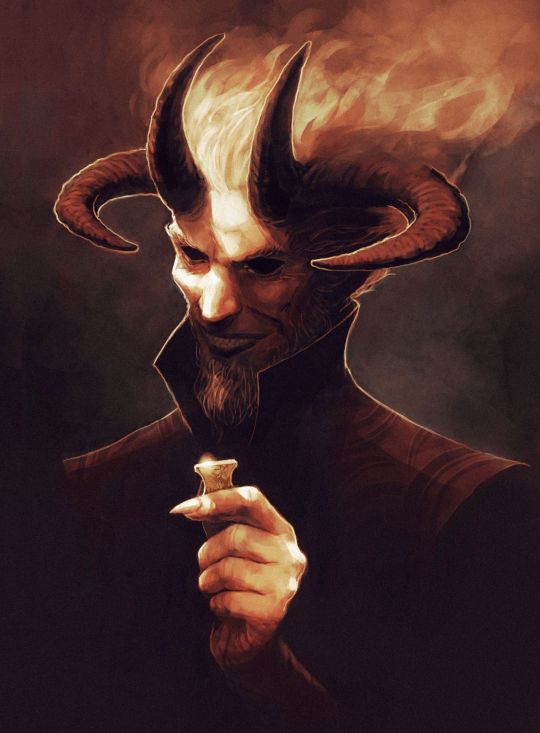
#crossover fanfiction#crossover#fanfiction#villain#demon#vampire#lilith#asmodeus#the bible#canaanite mythology#canaanite#ars goetia#islam#mesopotamian mythology#mesopotamian#jewish#christianity#the lesser key of solomon#judaism#book of tobit#elizabeth bathory#the blood countess#grigori rasputin#rasputin#the mad monk#the black monk#bathory#abrahamic mythology#abrahamic#archangel
9 notes
·
View notes
Text
Complete Monster in Gold Squad & Adventure of White Vortex: Lilith & Asmodeus.
Lilith,
Asmodeus,


#crossover fanfiction#crossover#fanfiction#villain#gold squad & adventure of white vortex#the bible#demon#vampire#lilith#asmodeus#judeo christian#judeo Islamic#book of tobit#ars goetia#mesopotamian#mesopotamian mythology#complete monster#pure evil#judaic mythology#judaic#book of isaiah#mandaean#mandaean mythology
5 notes
·
View notes